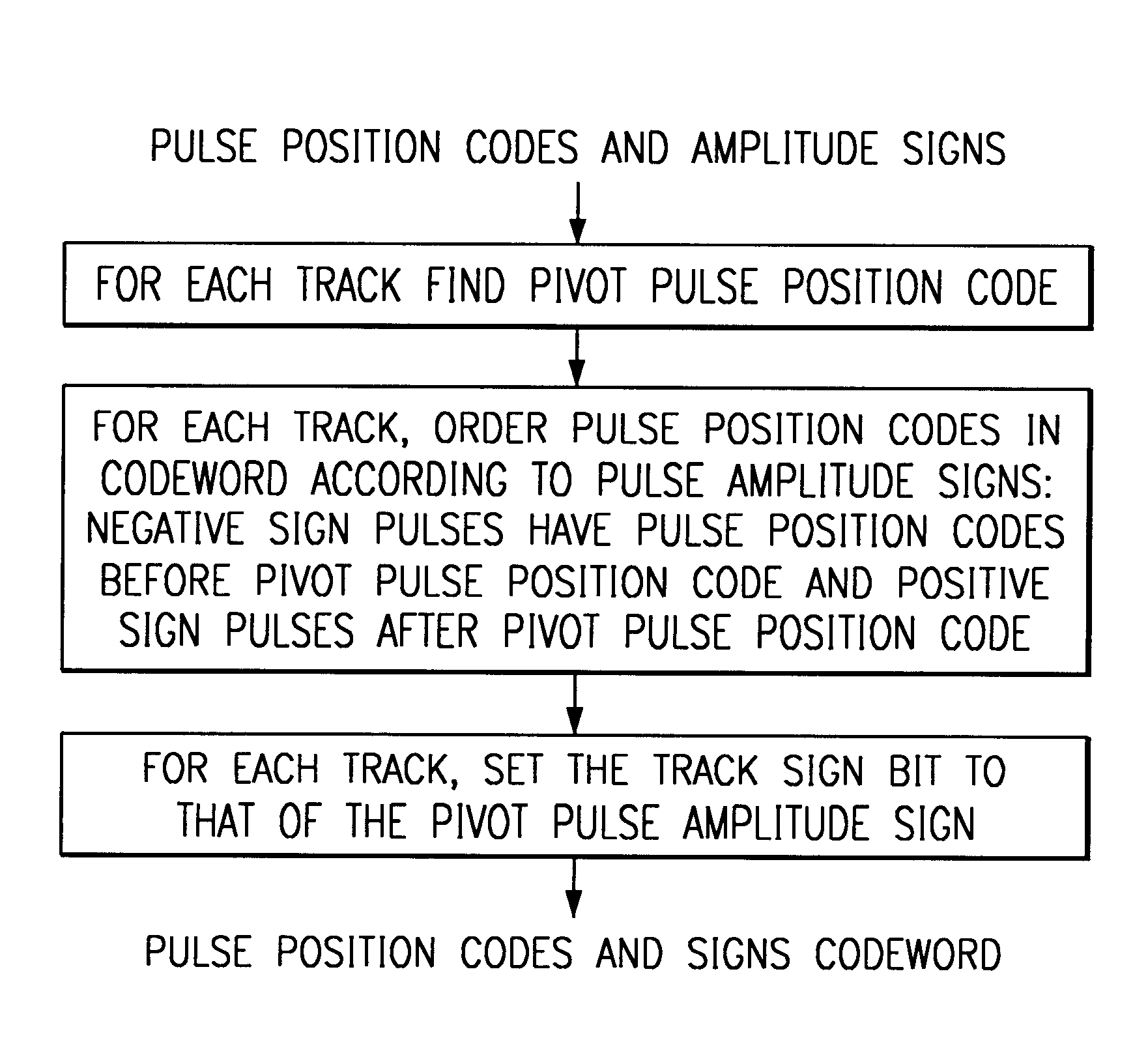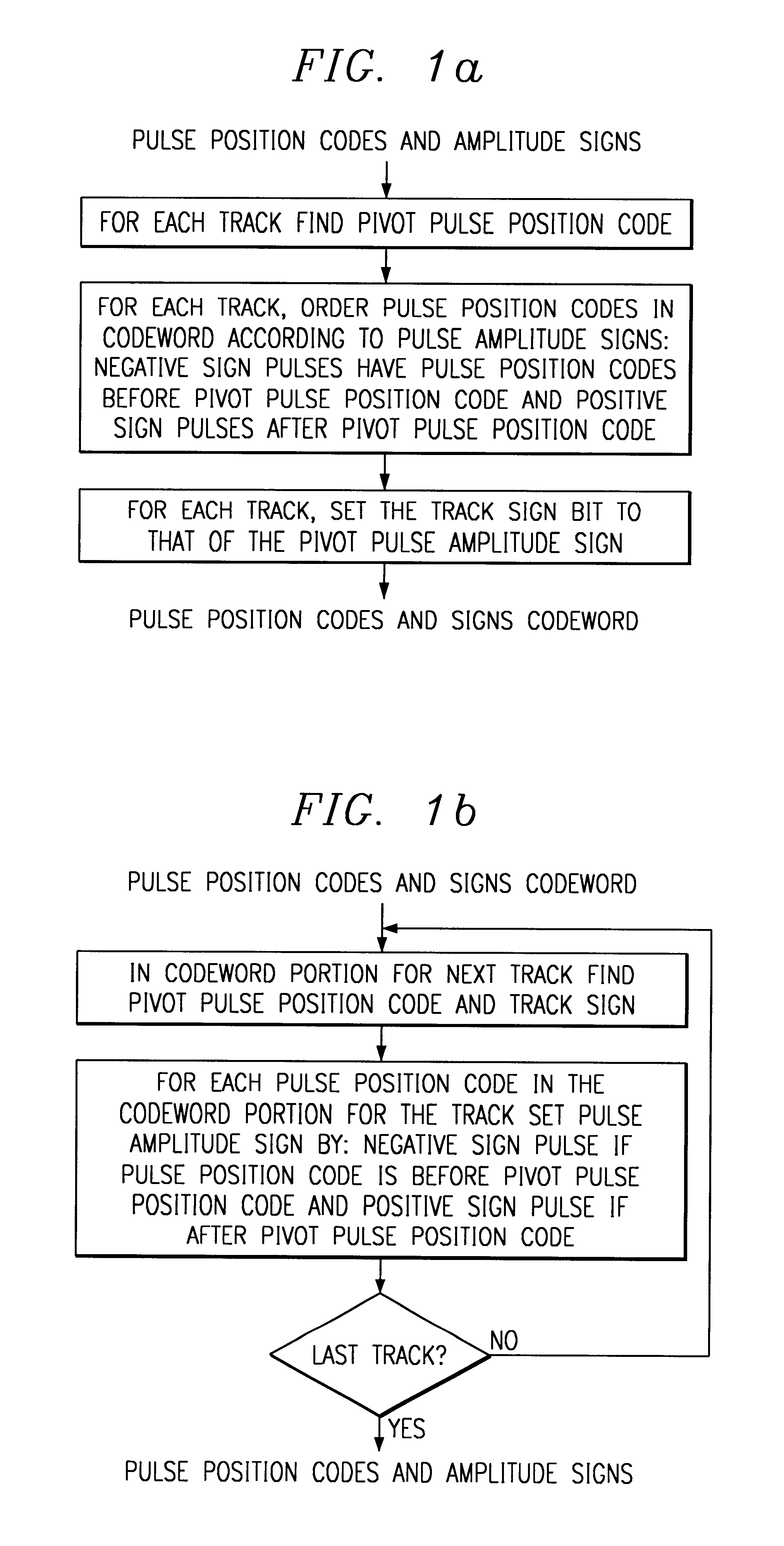Algebraic codebook system and method
a codebook and algebraic technology, applied in the field of electromechanical devices, can solve the problem that algebraic codebook vectors still require too many bits for encoding more than two pulses
- Summary
- Abstract
- Description
- Claims
- Application Information
AI Technical Summary
Benefits of technology
Problems solved by technology
Method used
Image
Examples
Embodiment Construction
1. Overview
The preferred embodiment systems include preferred embodiment speech encoders and decoders which use algebraic codebooks wherein the order of the pulse position codes within a codeword encode the pulse amplitude signs. In particular, for each track of pulse positions, one of the pulses is chosen as the pivot pulse, and all other pulses in the track with position codes listed prior to the pivot pulse position code will have negative pulse amplitude signs, and all pulses with position codes listed after the pivot pulse position code will have positive pulse amplitude signs. Hence, only the sign of the pivot pulse (1 bit) need be encoded for all pulses in a track, so there will be a single track sign bit. The pivot pulse needs to be uniquely identifiable among the pulses in the track; for example, the pivot pulse could be the pulse with the smallest pulse position in the track. Decoding for a track simply finds the pivot pulse position and deduces the remaining pulse amplitu...
PUM
 Login to View More
Login to View More Abstract
Description
Claims
Application Information
 Login to View More
Login to View More - R&D
- Intellectual Property
- Life Sciences
- Materials
- Tech Scout
- Unparalleled Data Quality
- Higher Quality Content
- 60% Fewer Hallucinations
Browse by: Latest US Patents, China's latest patents, Technical Efficacy Thesaurus, Application Domain, Technology Topic, Popular Technical Reports.
© 2025 PatSnap. All rights reserved.Legal|Privacy policy|Modern Slavery Act Transparency Statement|Sitemap|About US| Contact US: help@patsnap.com



